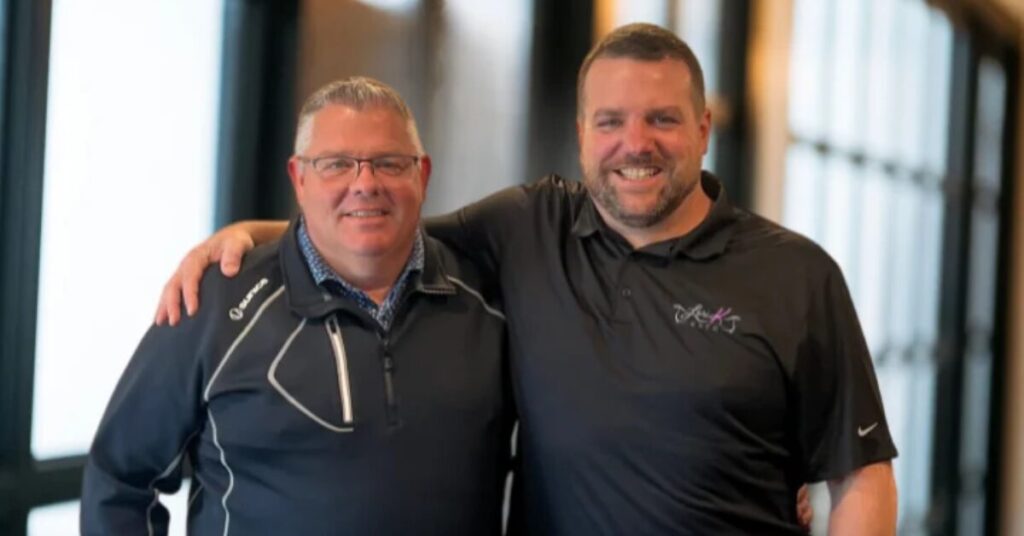Roads, rail and bridges help drive the region's economy.
by Rick A. Richards
Indiana's motto, Crossroads of America, makes it clear transportation isn't taken lightly in the Hoosier state. Thanks to eight interstate highways–more than any other state–the idea of Indiana being the nation's crossroads has been expanded by making Indiana a business destination.
But most Hoosiers take Indiana's 11,000 miles of state and federal highways and 5,300 bridges for granted. What shouldn't be taken for granted is the importance those roads and bridges play in the state's economy.
Without an up-to-date transportation system, Indiana's attractiveness as a place to do business is greatly diminished. John Swanson, executive director of the Northwestern Indiana Regional Planning Commission, says roads and bridges are important to everyone.
“And they are critical to some,” he says. “In Northwest Indiana, our location is an asset because there is a lot of heavy industry. I'm looking out my window right now, and as I look at I-94, I would say that half of the traffic passing by is trucks.”
Trucks mean commerce, and Swanson says it's his job and that of his staff at NIRPC to make sure the region's transportation network is maintained and regularly upgraded. “We need to make sure it's efficient in where it takes people, that it's safe to use and that traffic using it is free-flowing.”
Swanson says nearly everyone takes the region's roads and bridges for granted. That was the case with the Borman Expressway (Interstate 94 in Lake County) more than two decades ago. It had become a vehicle-clogged mess that meant sitting in traffic, sometimes for hours.
Residents and businesses then assumed that was just the way it was always going to be, and to the detriment of the region, businesses began looking for ways to avoid the Borman Expressway.
But a decade ago, a series of projects began to widen the interstate and people who had been caught in stopped traffic now found themselves zipping along an improved highway.
“It was a $700 million project, but it's made the road so much more safe and more efficient,” says Swanson. It was a project on the radar when Swanson (who is set to retire early in 2013) came to NIRPC more than 25 years ago.
“When I got here, the first question I was asked was, ‘What are you going to do about the Borman? It was a deterrent to development. No one wanted to drive the Borman because it was so congested.”
The improvements didn't come overnight, but in the past decade, Swanson says more than $2 billion has been spent and today, the Borman Expressway and the bridges spanning it have become free-flowing thoroughfares that encourage business to take a look at Northwest Indiana.
“We make sure to take full advantage of federal funding for transit and freight projects,” says Swanson.
Gary A. Evers, transportation projects manager for NIRPC, says federal funding for infrastructure projects in Northwest Indiana has increased over the first half of the last decade, but in recent years has declined. In 2002, more than $107 million was spent on 115 projects; by 2007, that had risen to nearly $334 million for 117 projects. In 2010, $265 million in federal funds was available for 379 projects, but in 2011, the money had fallen to a decade-low $96 million for 193 projects. The 2012 numbers have not been compiled.
Among the ongoing projects, $71 million has been set aside for the Indiana Gateway that will eliminate railroad delays between Amtrak and the Norfolk Southern Railroad.
Farther south, Swanson says discussions for the Illiana Expressway linking Interstate 55 in Illinois with Interstate 65 in Indiana are ongoing. “It's a $1 billion project with the goal to give relief to traffic on U.S. 30 and some routes in southern Porter County and in Jasper and Newton counties. Right now, though, the Illiana Expressway hasn't been identified in our long-range plans.”
Ultimately, Swanson says he would like to see passenger train traffic extended south from the South Shore line to Lowell, but right now that is nothing more than an idea.
Regardless of the money available for infrastructure projects, nothing happens without good construction partners, says Swanson.
Terry Larson, marketing director and an owner of Larson-Danielson Construction in LaPorte, says his firm recently stepped into the bridge construction. Larson-Danielson is best known for its large-scale office building projects, but with the downturn in the economy, the contractor moved into the bridge construction business a few years ago.
“Bridges are critical to transportation,” says Larson. “There are a lot of needs out there with bridges in the region.”
He says it made sense for Larson-Danielson to take the step into bridge construction. It was a way to keep employees and equipment busy when commercial construction dipped, and there were people already on staff with experience in bridge building.
“We don't do any large bridges,” says Larson. “Ours are somewhat small, usually over small streams or culverts.”
Larson-Danielson built its first bridge in 2005 and over the last five years has been involved in several bridge projects, including the recent rehabilitation of the Indiana Toll Road.
“Like any business, we look at opportunities as they come up,” says Larson, adding that the company's bridge projects have been confined to Lake, Porter, LaPorte and Starke counties.
“It's really a small niche for us, but we think we can do very well,” he says. “We are considering growing that area but right now we're not going to pursue doing larger bridges.”
Larson acknowledges that viable infrastructure is crucial to economic development in Northwest Indiana. He also acknowledges that in the coming years there is going to be an increased demand from county and state government to rehabilitate or replace existing bridges.
According to the Indiana Department of Transportation, of the state's 5,300 bridges, the median age is 43 years. INDOT says that 25 percent of its bridges (more than 630 of them) are rated as structurally deficient in some way.
“This is very different from building a building,” says Larson. “But it's not enough work to make it a major focus for us. We've been through a learning curve and we know there is enough out there for us to be a player in servicing that work.”
Jon Gilmore, president and CEO of Tonn and Blank Construction in Michigan City, says his company got into bridge work right after the disaster of the Interstate 35 West bridge collapse over the Mississippi River in Minneapolis, Minn., in 2007.

span taking County Road 500 East over the Kankakee River in Porter County.
“We thought it would be a good fit for us and we actually tried to buy a bridge building company.” That didn't happen, so Tonn and Blank started its own bridge building company, and like Larson-Danielson, began small.
“We decided to stay within 100 miles of Michigan City and be conservative in our growth,” he says.
Gilmore says he recognizes the need for strong infrastructure and expects Tonn and Blank to have a role in future projects.
“Northwest Indiana is in a unique position,” says Gilmore. “You can't get to Chicago from the east without going through here whether it's by rail or highway. That's why there are lots of logistics companies looking at the region as a place to do business.”
Already logistics operations have begun work at the Gibson Yard in Hammond and at Kingsbury Industrial Park in LaPorte County.
Gene Yarkie, vice president of operations for Indiana with Rieth-Riley Construction in Goshen, says most of what his company does is road and bridge work. Rieth-Riley has 24 offices in Indiana and Michigan and has a primary focus on road and bridge construction.
Yarkie admits most people see road construction projects as a pain, creating delays and sometimes long detours. The projects raise questions about why it takes so long and why on any given day, paving isn't being done.
“Paving is just the finishing touch,” says Yarkie. “I understand where people are coming from, but for us as a contractor, we're at the mercy of the different utilities. The phone company doesn't work for us. The electric company doesn't work for us.”
When a highway is being widened, work can't move ahead until the telephone and electric utility poles are moved. Additionally, new highways are making room for fiber optic cables, adding another layer to the process.
“It takes a lot of pre-planning,” says Yarkie. “If we didn't take time to move the wires, they'd be right in the middle of the new road. We would like nothing more than to get in there and hammer out our work day after day, but we can't do that.”
And as frustrating as that is for Yarkie, he understands the importance of making sure new electric, telephone and fiber-optic lines are put in at the same time as a new road. Usually, he says, a new road brings new development with it, and having the utilities in place makes the process go more smoothly for developers.
“Before we ever get to the paving, we also spend a lot of time on the sub-grade,” says Yarkie. That's usually at least 14 inches and contains a variety of material to provide proper drainage.
Even the final coat of asphalt has gone high-teach. “It's not unusual in our hot mix to use a polymer so it's more rubberized,” says Yarkie. “That's been a development that's come on in the last 15 years. What this does is make the road more flexible and less likely to crack.”
It all is part of an effort to make sure the highways and bridges that made Indiana the Crossroads of America are more than just a motto.



